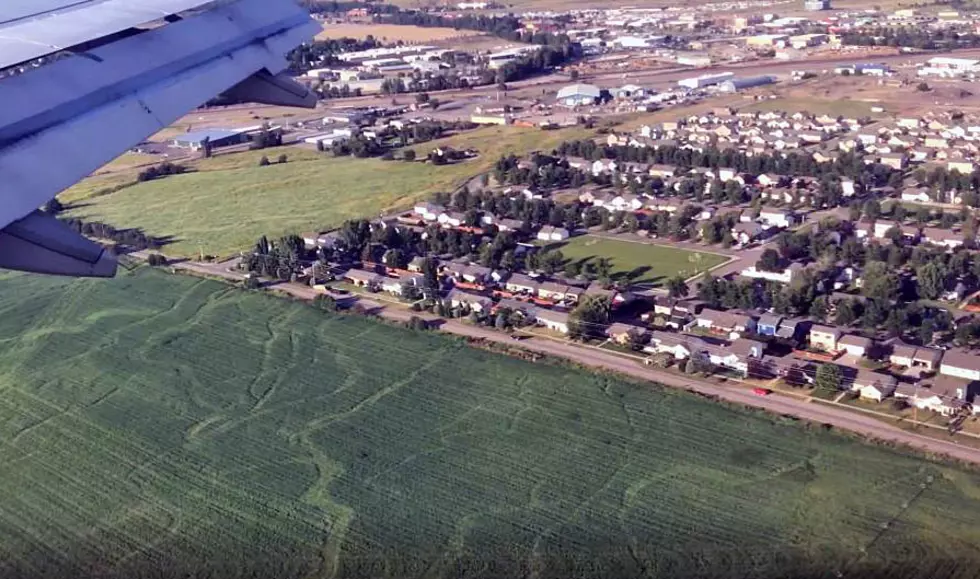
Over protests, Missoula City Council approves zoning for airport annexation
The Missoula City Council unanimously approved zoning changes Monday night that set the stage for annexation of 3,200 acres west of the city, including Missoula International Airport, Missoula Development Park and Canyon Creek Village subdivision.
The vote came despite complaints from landowners and developers at the development park, who said they’ll be forced to pay higher taxes and abide by stricter city regulations governing landscaping and business signs.
A public hearing and vote on the annexation plan is set for Monday, Dec. 10.
First, though, the city needed to approve new zoning districts for the heavily developed area, which is now governed by Missoula County zoning and regulations.
And that’s where the complaints came Monday night.
Ken Johnson, president and owner of CM Manufacturing, said his business was one of the first tenants at the development park when it moved onto its 2-acre lot 21 years ago.
He’s in the midst of a major expansion, a testament to his aerospace manufacturing company’s trusted relationship with all the major aircraft manufacturers.
“When we started 21 years ago, we did not know what growth we would go through,” he said. “We are adding 7,000 feet.”
His issues with the annexation include landscaping, lawns and islands that will be required in his parking area once the development park is under city jurisdiction.
That means more expense, more irrigation, larger water usage and higher bills – and creates safety issues for the semis that pull into his plant each day, Johnson said.
“The majority of my lot is going to be lawn that I’ve got to put water on consistently every day,” he said. “It is a real struggle. The requirements, I feel, are out there.”
When he purchased the property and built his business, he gave up his right to protest annexation – in exchange for hooking up to city water and sewer lines, Johnson said.
Now he wants to protest, but cannot. And he said other development park tenants feel the same way.
“I don’t think any of the other business owners out there support annexation,” Johnson said. “My taxes are going to go up, probably 25 to 30 percent. I’m not happy about that. I wish there was some way I could protest it. Apparently, I can’t and I’m disappointed with that.”
“It’s an industrial park,” Johnson said. “What do you want? Do you want trees, shrubs? Or do you want companies to come in and create decent jobs in this area?’
Developer Joe Easton was also unhappy. He was at Monday’s meeting representing the owners of an 18.2-acre property at the 6000 block of Expressway in the Missoula Development Park.
“We’ve had a project planned and in front of the county for more than a year,” he said.
Now the signs he told clients could be placed on their buildings – in accordance with county sign codes – would violate city sign regulations.
The county’s code allows a secondary sign of less than 200 square feet located on the secondary frontage of a building. City zoning only allows signs on the front of a building.
“Our clients bought this location and are developing the project with the intention of having signage on that north side,” Easton said. “There are five other examples of signage on the north side of the building – including Minuteman Aviation, Temp Right and others.”
The solution, Easton said, was to roll forward the existing sign code with the county development park.
Although council members said they understood the business owners’ concerns, and a few said they wished there were a solution, all 11 in attendance ultimately voted for the new zoning districts.
They urged the concerned businesses to talk with city Development Services officials about their concerns, and to possibly request variances.
“We would be happy to fix these issues as they come up,” said Councilwoman Heather Harp.
“I have full faith that Development Service will work through these issues with you,” said Councilwoman Julie Armstrong.
Mary McRae of Development Services said the sign ordinance differences aren’t that significant. The complaint is basically about sign location and height, she said.
The location some of the businesses want is facing Interstate 90 – which would be allowed under county rules, but not in the city. The height now allowed is about 30 feet, but after annexation will be 20 feet.
As approved, the new city zoning districts include:
- An aviation zone A that will cover Missoula International Airport and its related businesses and agencies, and even any future airport-based hotels.
- A Neighborhood Character-Missoula Development Park overlay that will apply to the city’s standard limited industrial and community commercial zoning.
